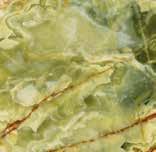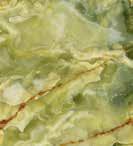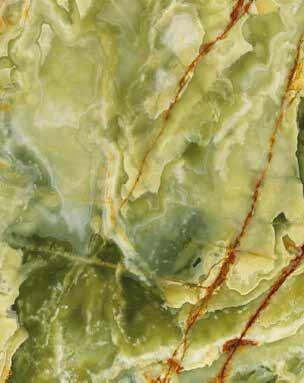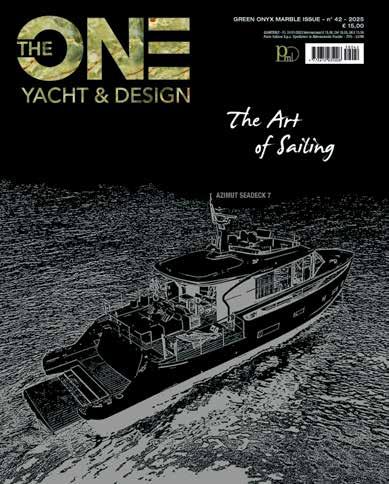





















by Samuela Urbini - ph. courtesy by Cristiano Gatto Design

A graduate of the Fine Arts Academy in Venice, Cristiano Gatto founded his studio in 2001. During his career he has designed many yachts for Italian and international shipyards, including Heesen Yachts, Majesty Yachts, Isa, CRN, Perini Navi, Benetti and Cantieri di Pisa. More than an ultra-technological studio, he compares Cristiano Gatto Design to a 15th-century artistic workshop

For Cristiano Gatto, designing a yacht is like sculpting a work of art: every line and detail takes shape through a creative process rooted in his artistic training. A graduate of sculpture at the Fine Arts Academy in Venice, Gatto cherished beauty in his heart and eyes as he grew up in the magnificent lagoon city. He became familiar with its most remote corners and it’s here that he finds inspiration for every new project. After spending some time in Philippe Starck’s Italian studio, in 2001 he founded the Cristiano Gatto Design studio, handling the design of yacht interiors with international yards like Heesen Yachts, Majesty Yachts, Isa, CRN, Perini Navi, Icon Yachts, Astondoa, Benetti and Cantieri di Pisa. He has also worked for the residential and hotel sectors. Today he has widened his horizons by designing exteriors for 360° yacht projects.
“Yacht design is at the heart of what I do, but influenced by my experience as a sculptor I approach every project as a sculpture, with the overall design in mind but also a focus on the smallest details”, says Gatto, with a spark of passion in his eyes as he speaks from the UAE, where he is meeting with the Gulf Craft yard to discuss the latest yacht sold and designed entirely by the studio, the Majesty 145. This approach translates into a very precise creative process. “We become translators of different languages, we have to take the language, the
desires, the dream of the client, who usually makes a list of desired elements, and reach a common language of images. These images must then be translated into technical drawings that someone can build, transforming them into physical objects that we check and modify with the artisans so we can achieve the transformation of a primordial idea into a finished object”.
Gatto compares this method to a join-the-dots puzzle. “Except there are no numbers to give a clue as to the final design. Joining the dots and translating into the various languages to achieve the final object is the same process you follow when you make a sculpture”. It’s a method he learnt in art school, one he has refined over his 30-year career and passed on to the team in his studio, which Gatto describes as more like a 15th century artistic workshop than an ultra-technological studio. “I always make one rule for new arrivals – before touching the computer they must know how to design by hand, because fear of the blank page is much greater than that of the empty file. Time will tell if you’re an artisan or artist – we create artistic artisans and that makes me happy”. The studio is based in Marcon, near Venice, and a new branch has opened in Fort Lauderdale, Florida, joining the Dubai branch that opened in 2017. It is currently working on 22 projects, with nine set for delivery over the next 12 months – three yachts for Heesen, three

Above, a sketch of some details in the Van der Valk 40 project, currently in the advanced design stage at the Cristiano Gatto studio, where hand drawing is a crucial element. Right, a detail of the Dutch yacht’s staircase, whose intense aesthetic appeal is generated by alternating wood and mirrored surfaces. Opposite page, a rendering of the Van der Valk 40’s exterior lines, which faithfully echo the sketch below




for Gulf Craft, one for Van der Valk as well as a hotel, penthouse, restaurants and lobby in two towers in Miami. Even a synagogue in the Bahamas, a project that has put his creativity to the test. “When the blank page frightens me so much I can’t make a single pencil stroke I go for a walk round Venice. I find relationships I hadn’t noticed before, between full and empty spaces, light and shade, subjects that recur in sculpture. I see it in architecture, objects, in the sedimentation of the experience of designers who in past centuries made this unique city. I take photos and go back to the studio, make sketches and talk with Matteo Silotto, who I’ve worked with for many years and who knows immediately what I have in mind. Together we create the first drafts, initially by hand then in 3D, then comes the roughing out (a term used in sculpture to describe the process of removing excess material to
At first the Cristiano Gatto Design studio specialised in interior design, but it gradually began to design exteriors, too.
The first yacht designed in its totality was the 50-metre I Nova launched in 2013.
This all-round approach, which enables the design of essential elements like the distribution of spaces, window locations and light angles can be admired on the Van der Valk 40, in the renderings above and to left
reveal the shape in its crudest form – ed) and so on until the concept”. Gatto’s projects begin from a macro perspective and end in the design of the smallest detail of the furnishings, but sometimes they follow the reverse process, inspired by an unexpected element. This was the case in the 40-metre Van der Valk Evo, whose design was sparked off by a piece of furniture in the studio that inspired a dialogue with the owner. “We’re now working on fine tuning some of the details, like the personalisation of the embroidery on the decorative cushions and bedspreads”, says Gatto. He describes himself as ‘picky’, to the extent that he has opened an upholstery workshop where he can experiment and do research and development on the use of upholstery materials and techniques for decoration. Because as a sculptor, he has a vision of the whole but knows it’s the details that make the difference.